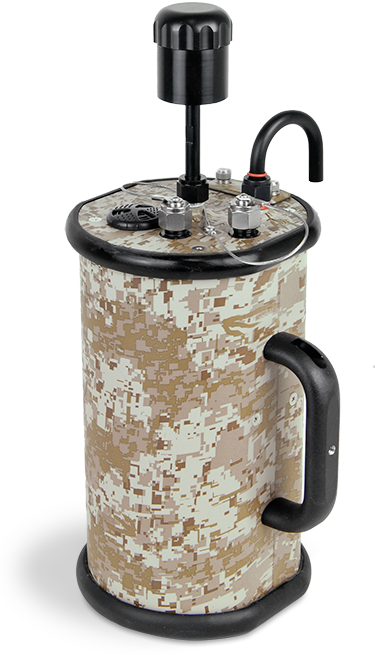Tac-7C®
UV-C Based Biological Aerosol Detector

The Tac-7C® UV-C based biological aerosol detector measures the biofluorescence and diffractive scattering produced by aerosol particles as they pass through an intense ultraviolet beam. It is used to monitor environmental particulates and classify them as being of either biological or non-biological origin, and to alarm if there is a sudden increase in the bioaerosol level within a particular particle size range. It was developed by Research International for homeland security, public health and military applications.
Tac-7C tracks background levels of airborne non-biological and biological materials and provides an alarm if there is a rapid increase in the aerosol background. It can also be configured to activate other equipment such as air samplers. It does not identify the specific type of biological material detected, and for that reason it is correctly characterized as an aerosol “trigger.”
Operation may be monitored remotely using Windows-based software provided with the unit, and changes may be made to its operating characteristics as desired. Signals may be transmitted wirelessly between the Tac-7C and a monitoring PC or other equipment using BioLink™ Bluetooth transmitters and receivers, or via RS-232 cables.
Download Datasheet Request a Quote
The Next Generation in Biodetection
Ideal for Use in the Field
Lightweight and compact, the Tac-7C has a wide operating temperature range and can operate for 24 hours or more on rechargeable battery.
Connectivity
The Tac-7C can communicate with a computer or air sampler using an RS-232 connection or wirelessly with Bluetooth transmitters and receivers.
Long-Term Data Storage
Tac-7C is equipped with an onboard removable SD-type data card that can store more than five years of aerosol data.
- Features
- Applications
- Parts & Accessories
Features
Product Features
- True UV-based “biological trigger”
- Adjustable settings
- High sensitivity
- Low false positives
- Photon counting: no analog drift
- Automated trigger/sampler protocols
- 24+ hours operation on swappable battery
- Wide operating temperature range
- Light weight/small size
- Long operating life
- RS-232 or wireless communications capable
Applications
Applications
- Indoor or outdoor use
- Military bases
- Sports stadiums and arenas
- Subways and airports
Parts & Accessories
Parts and Accessories
To request a price quote, check the box beside the desired items(s), fill out the contact form, and press Submit.
Please allow two business days for a reply.
Related Products




